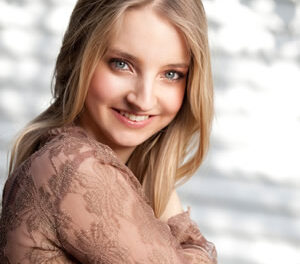Summer music festivals are as varied as their wide-ranging locations. Some are exclusively vehicles for well-known artists to present concerts in idyllic settings that would normally not attract such performers during the “regular” season. Others may serve as extended master classes where young musicians, individually and en masse, firm up their technique and musical interpretations. The best of both worlds is where a group of select young musicians have the opportunity to learn, play in public, and hear and see their mentors and teachers perform – a way to observe “the way it oughta be.” The Eastern Music Festival (EMF) – along with other notable festivals like Aspen and Interlochen – takes this integrated approach. The results are quite eye and ear-opening for both the musicians in the festival and the public.
Just a few days ago I wrote a review of a remarkable performance of Mahler’s Sixth Symphony by the 100% student Festival Orchestra. Two days later, on July 9, at Guilford College, I attended a performance by the “grownup” band – The Eastern Philharmonic Orchestra. This is an elite group of professional musicians, many of whom are regular season members of such familiar groups as the NC Symphony, the Greensboro Symphony, and Winston-Salem Symphony, plus orchestras all over the United States and abroad. Almost all are faculty members at the EMF. Without diminishing by any means the Mahler performance by the student orchestra just two days before, you could immediately hear that this was a professional orchestra, for there is a certain sound that separates the men/women from the boys/girls.
Leading this talented group was guest conductor George Manahan, Music Director of the New York City Opera. He is a fireball who chose to conduct without a net (no railings or warning barriers to prevent stepping back off the podium), and we collectively held our breath when he got quite close to the edge. The program was a wonderful mix of German, American, and Russian cultures, and the orchestra was equally at home in each.
The “Academic Festival” Overture by Johannes Brahms belongs to the somewhat disparaging category “warhorses,” implying an overplayed, too-familiar work. Good musicians are able to take overdone and even pedestrian works and bring a sense of discovery and freshness. There is a lot going on in this overture, which Brahms wrote when he was presented an honorary doctorate. Instead of a sober, high-minded, scholarly composition, he flashed a bawdy, common collection of folk tunes and drinking songs, sort of like showing Animal House at a coronation…. This was played with frivolity reflecting the tunes on which it is based, and it was a wonderful curtain raiser.
We moved from German student songs to a work strongly based on what is often called “America’s only indigenous music” – jazz. As the complex, syncopated rhythms and extended harmonies of jazz rippled out to the rest of the world in the early 20th-century, many composers tried to incorporate these elements into their compositions. Masters like Stravinsky, Ravel, Milhaud, and others were quite successful using at least some jazz-like influences in their music, although others were as anachronistic as a string quartet in a marching band. Aaron Copland grew up with this new music, and his Clarinet Concerto is a shining example of jazz influences seamlessly melded into a “classical” composition. To add another level to this particular performance, the soloist was not a clarinetist but Branford Marsalis, playing a soprano saxophone. Written in the late ’40s and first performed in 1950 by Benny Goodman, this is a brilliant example of Copland’s distinctive style. The slow first movement is an evocative, wistful journey reminiscent of the composer’s works like “Quiet City,” “Music for the Movies,” and parts of his opera The Tender Land. Long, slow, arching lines give the soloist a chance to display his phrasing and tone before launching into a cadenza and the fireworks of the last movement, simply titled “rather fast.” Sharp, biting rhythms are the name of the game in this movement. The soloist employs sudden leaps in and out of the various registers of his instrument, and Marsalis tossed them off with ease. There is a subtle distinction between an ensemble playing in “correct” rhythm and one that actually swings and pulses as one unit. This group played with razor-edge accuracy and with a swagger and ease that only come with experience and having this music in your soul. This Concerto is a strictly wood-and-string affair with only strings, piano, and harp backing up the soloist. For this reason, I missed the more “woody” sound of the clarinet and its distinctive and changing registers. The soprano sax was a bit too metallic for my liking, but Marsalis was masterful in conveying, first, the serenity of the opening movement and then the frenetic, big-city bustle of the highly charged final movement.
Written near the end of his life, “Symphonic Dances” by Rachmaninov is a tour de force of orchestration comparable to Bartók’s Concerto for Orchestra. Marsalis sat in with the orchestra, playing alto saxophone for a very lovely solo in the middle movement. This work is filled with themes from the Russian Orthodox Church and includes one of Rachmaninov’s favorite and often used themes – the “Dies Irae.” Many soloists and sections take their turn in virtuosic passages, and if the previous works didn’t convince you, this surely showed that this “pickup” orchestra is at the highest echelon of symphonic performance. Some of the players were “campers” in this same EMF not too long ago, so you can be sure that many of the students at the festival will someday occupy chairs in orchestras as prestigious as this one.
For a list of the EMF’s concerts, click here [inactive 11/05].











